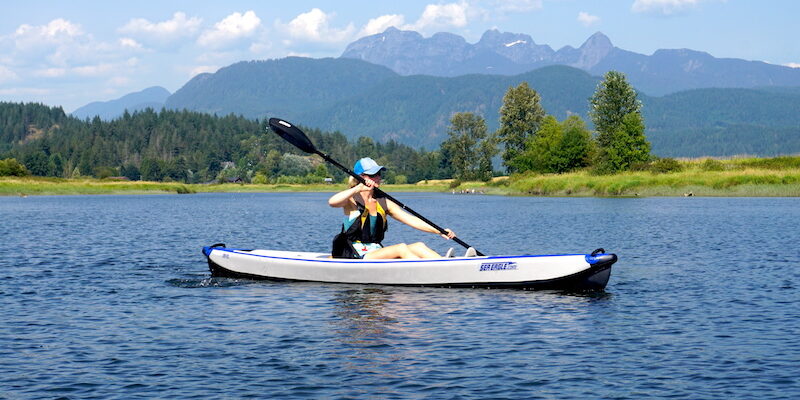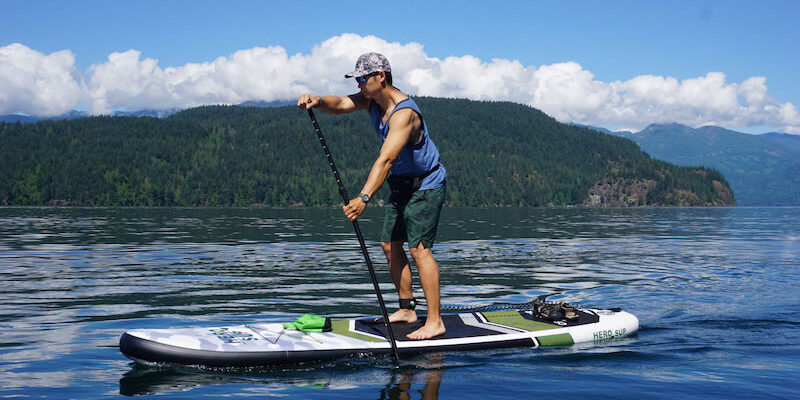I have always wanted to be able to easily read the weather without having to look it up online or hear it on the radio. For kayaking, knowing the weather is extremely important.
I have had the misfortune of being out on the ocean having a happy paddling experience when sudden winds picked up and no matter how hard I paddled, I seemed to get nowhere and if I stopped paddling I would get blown backwards.
Let me tell you that is NOT a good feeling. My arms eventually felt like they were going to drop off and I began to have a sudden panic attack that I would never make it back to shore. Ugh!
You would think an experience or two like that would make someone learn to read weather patterns, but I have honestly never taken the time.
I have always relied on the friendly weather man or woman but we all know the forecast is not always right and Mother Nature often has a mind of her own.
This year I have decided to at least learn the basics. I am not a very technical person so going into great detail does not interest me.
However I will share with you what I have learned so far and hopefully these few basics will help all of us to have more knowledge of the warning signs that tell us the weather could be changing fast.
THE BASICS TO READING THE WEATHER
The first thing I learned was that I don’t need any special equipment to be able to make good weather predictions.
That was good as I had no plans on buying any. Second there are four things that need to be considered for personal weather forecasting:
- Clouds
- Air Pressure
- Nature/Animals/Insects
CLOUDS
There are three main categories of cloud formations:
- HIGH CLOUDS – Could be described as tiny balls or rippled sand, thin veil of ice crystals that form a halo around the sun, or horsetails. These clouds tell of upcoming weather. The ice crystals are created from moisture in the air that is generated by storms in the distance. These clouds can often tell of bad weather coming.
- MIDDLE CLOUDS – Could be described as lumpy or a light grey veil that almost blocks the sun. The middle clouds tell of the weather over a larger area.
- LOW CLOUDS – Could be described as puffy, straight or layered, clustered or dark clouds that are not normally visible from directly below. These low clouds are generally a manifestation of current weather.
So in other words, high clouds can tell us of weather to come, middle clouds tell of weather over a larger region and low clouds tell of the current weather in our immediate surrounding area.
AIR PRESSURE
When the temperature changes the air begins to move differently. High pressure means the air is being compressed downwards and is being warmed.
Consequently we will experience drier and warmer conditions. Low pressure means rain, wind and stormy weather.
High air pressure will circulate wind clockwise and low will circulate counter-clockwise. Besides temperatures there are other things that cause air to rise as well such as mountains.
The thing to know here is which way the wind is circulating. If you can figure that out, then you can possibly tell whether the air pressure is high or low.
NATURE
Nature is a fantastic way to forecast the weather. Here are some interesting facts that may be useful:
- Low pressure causes insects and birds to fly low.
- Bees will be more active before fair weather.
- Odors are more noticeable in low pressure air.
- Sounds will seem louder in low pressure air.
- Smoke that flattens out indicates bad weather.
- Smoke in a vertical column indicates fair weather.
- A halo around the sun usually indicates rain before the night is done.
- A halo around the moon indicates there can be rain before noon.
- When the sky is crisp and clear and the moon and stars are bright and twinkly it means there is very little moisture in the air (I think most of us knew that one).
Most of us know the rhyme: “Red sky at night, sailors delight. Red sky in the morning, sailors take warning.” I never really understood what the red sky signifies.
Turns out red skies mean there is dust in the air to the west. That is a sign of dry air coming towards you (red sky at night).
However the red sky in the morning means the dry air has passed and is being pushed by moisture laden air.
IN CONCLUSION
Hope this helps a little. It is really the very basics but if we can remember even a few of these tips I think we will be much better off when out on the water and at least be able to make an educated weather guess.
Find more kayaking tips & advice and make every paddling adventure a safe and happy one.


An answer from an expert! Thanks for contriibutng.